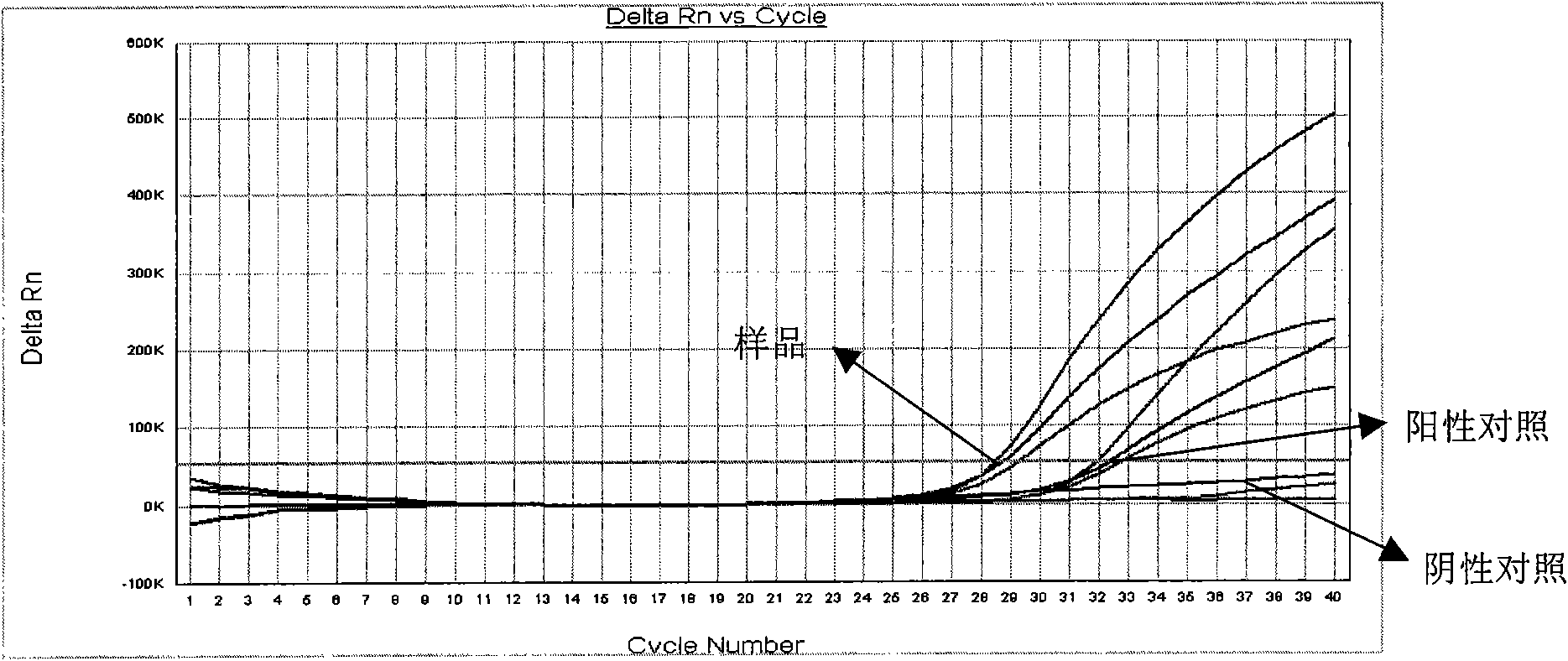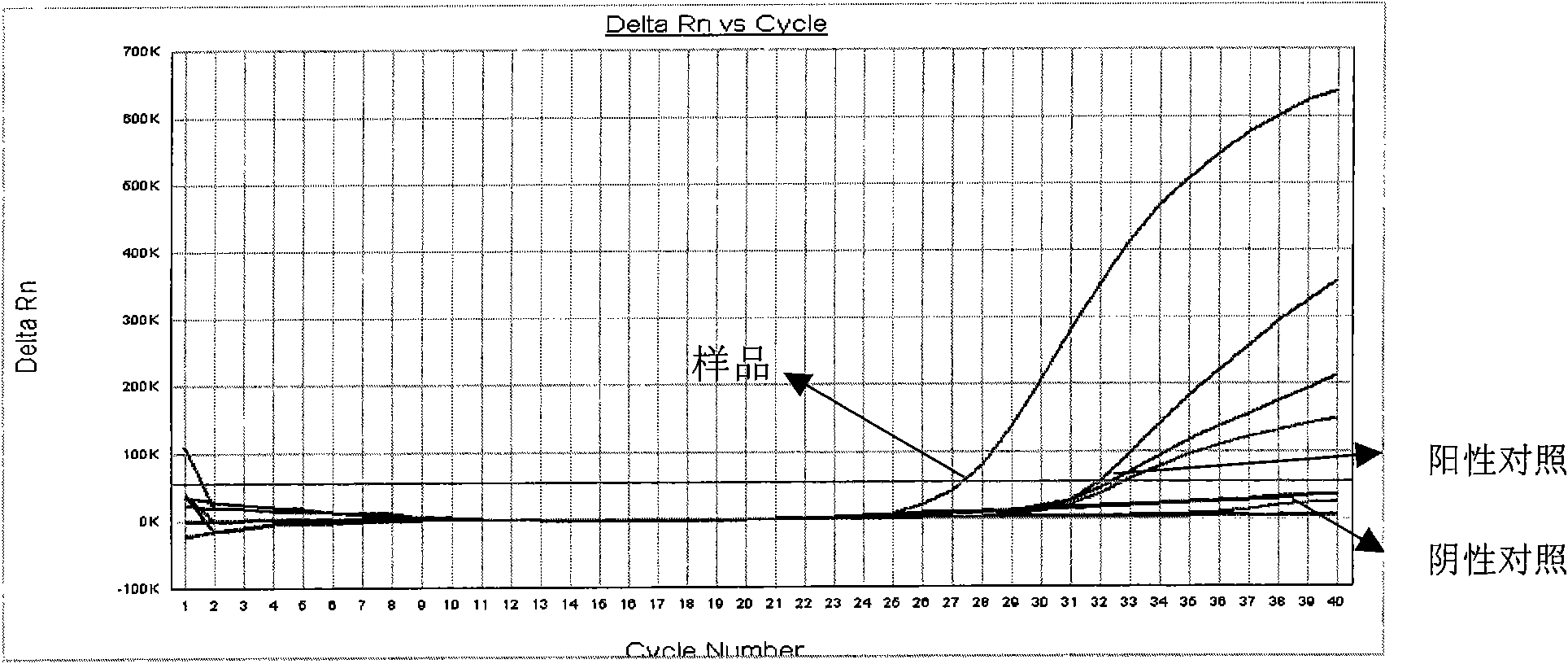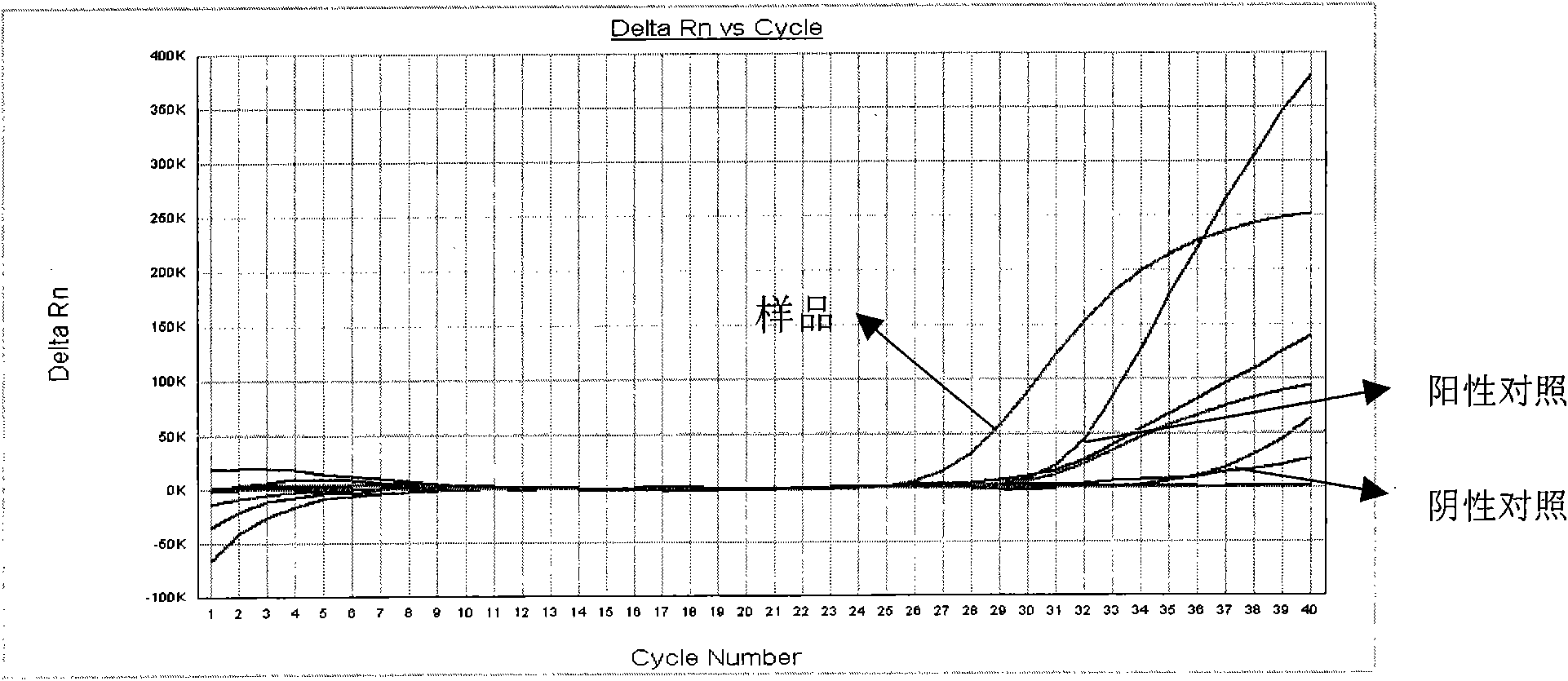Multiplex fluorescent quantitative PCR detection method for main pathogenic bacteria in aquatic product
A technology of multiple fluorescence quantitative and detection methods, applied in the direction of microorganism-based methods, microorganism measurement/inspection, fluorescence/phosphorescence, etc., to achieve the effect of improving food hygiene quality and promoting food export
- Summary
- Abstract
- Description
- Claims
- Application Information
AI Technical Summary
Problems solved by technology
Method used
Image
Examples
Embodiment
[0042] Implementation example: the detection of fresh shrimps (A, B two samples), specifically according to the following steps:
[0043] 1. Take 25g shrimp samples, cut them into pieces, mix them with 225mL enrichment solution, and incubate at 37±1°C for 4-6h;
[0044] 2. Take 1.5mL enrichment solution into a centrifuge tube, centrifuge at 12000rpm for 3min, and discard the supernatant;
[0045] 3. Resuspend the pellet with 1 mL of ddH2O, centrifuge at 12,000 rpm for 2 min, discard the supernatant, and repeat the operation once;
[0046] 4. Boiling method to extract the genomic DNA of samples A and B;
[0047] 5. Take 18 μL of the PCR reaction mixture and add it to the PCR reaction tube, then add 2 μL of DNA respectively;
[0048] 6. After setting according to the above procedure, put the PCR reaction tube into the fluorescent quantitative PCR instrument for detection;
[0049] 7. Analyze the specific S curve and the Ct value of the sample to be tested, and judge the resul...
PUM
 Login to View More
Login to View More Abstract
Description
Claims
Application Information
 Login to View More
Login to View More - R&D
- Intellectual Property
- Life Sciences
- Materials
- Tech Scout
- Unparalleled Data Quality
- Higher Quality Content
- 60% Fewer Hallucinations
Browse by: Latest US Patents, China's latest patents, Technical Efficacy Thesaurus, Application Domain, Technology Topic, Popular Technical Reports.
© 2025 PatSnap. All rights reserved.Legal|Privacy policy|Modern Slavery Act Transparency Statement|Sitemap|About US| Contact US: help@patsnap.com



